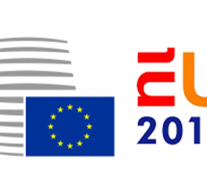
The Dutch presidency: 6 months of up and down
Editorial 18 July 2016Amid the recent risk of Grexit and Eurozone crises, extraordinary migration flows, terrorist attacks in Europe and a daring Russia, taking over from Latvia was not an easy task for the Dutch Presidency…
On 30 June 2016, the Dutch Presidency of the Council of the European Union has come to an end.
The Dutch Presidency took over from Latvia in a moment that was not easy to deal with. Besides the recent Grexit and Eurozone crises, it was a time of extraordinary migration flows, terrorist attacks in Europe and a daring Russia.
During the last 6 months, the challenges faced by the Dutch Presidency were many, both internal and external, such as stabilising the Eurozone and dealing with the migration crisis, Euroscepticism, as well as Europe’s security and its troubled neighbourhood. In terms of energy and climate change, the Netherlands Presidency has pressed strongly for the further development of both the European Energy Union and the outcome of the Paris Agreement.
Tackling the migrant crisis was probably even more important for the Dutch Presidency, which had to deal with a twofold issue towards its internal and external borders. While the Schengen Area has potentially risked to collapse, thus jeopardising the freedom of movement given to all European citizens, a huge incoming flux of migrants from the Middle East and Africa to Europe continued to grow. Almost every single day saw devastating news of migrant boats sinking and people dying. In 2015, around 3,700 migrants died trying to cross the Mediterranean.
Maybe one of the most important steps forward has arrived on 22 June, when the European Parliament voted on establishing a European Border and Coast Guard. The purpose of this agency is to strengthen the external borders and to enhance the EU capacity for a common response to the refugee crisis.
On the other hand, a major political blow for the Dutch presidency was the negative result of the referendum on the ratification of the Association Agreement with Ukraine at the half of the semester.
Despite ratified by 27 member States, the agreement remains provisionally in force but will not be fully implemented until ratified by the Netherlands. This event has inevitably damaged the image of the Dutch Presidency, normally expected to be a beacon of unity for the Union.
Nevertheless, in order to face the transnational nature of cyber crime and cyber security issues, terrorism and organised crime, as well as human trafficking, the Presidency has managed to develop a coordinated European response.
Furthermore, many are the positive outcomes reached by the Dutch presidency, which has paid great attention on crucial policy areas such as active labour policies, labour market participation, poverty reduction and social inclusion.
While reinforcing the role of the EU as an innovator and creator of jobs in Europe, the Presidency has worked towards the establishment of an agreement on a comprehensive package of measures to stop tax avoidance, as so to fight against the EU-wide tendency of growing disappointment and mistrust in EU institutions and its technocrats.
For the Slovak Presidency, which is holding the Presidency of the Council of the European Union for the next six months, two are the major challenges to deal with. The Presidency will need to find a way to reduce the growing gap between the European electorate, more and more disenchanted, and the so-called Eurocrats, more and more disconnected from the constituency. Therefore, in light of the increasing Euroscepticism, a delicate balance, between advocates of quick and further integration, and those in favour of a more attentive and slower way forward has to be found by the Slovak Presidency.
Enjoy your read!



